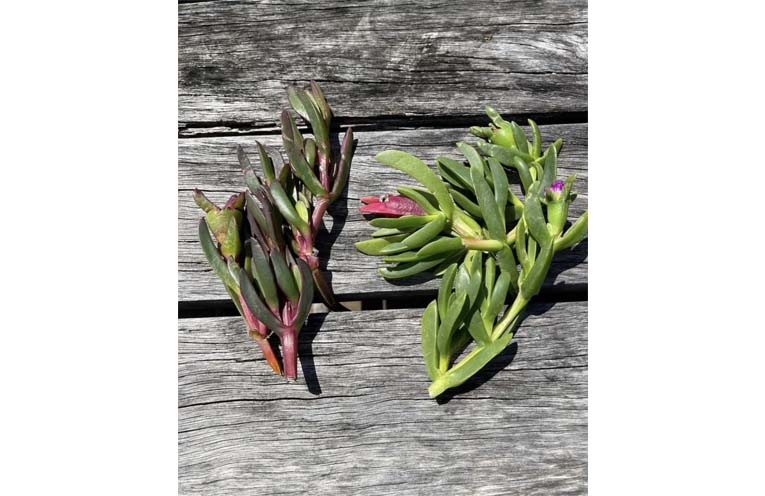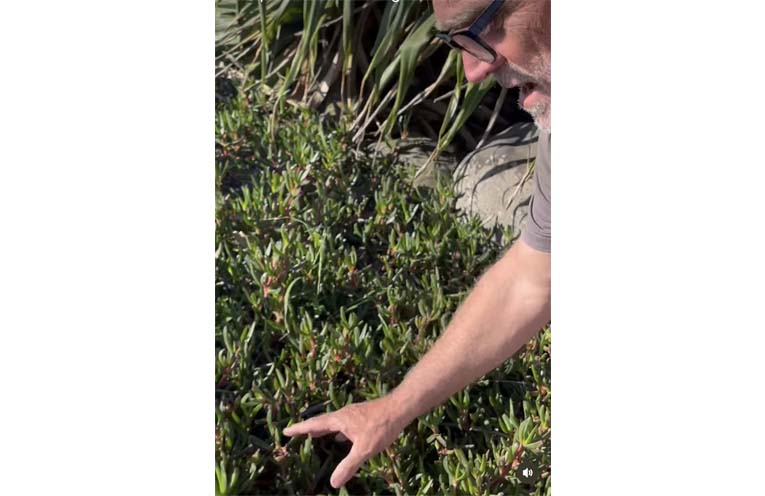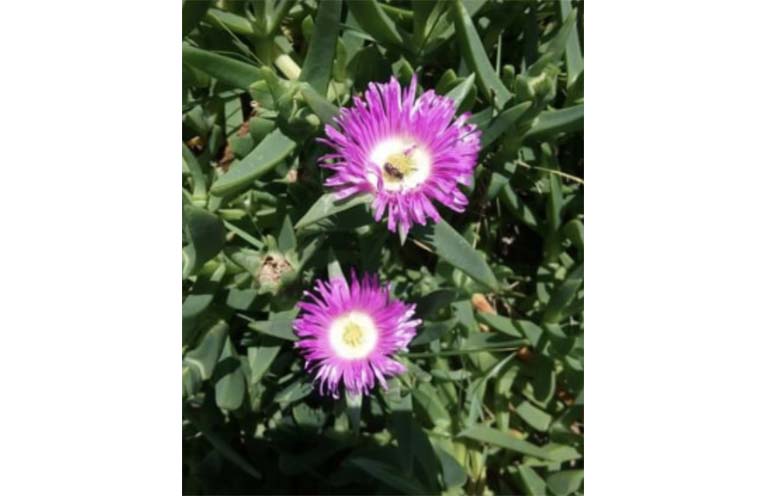
THE threat of hybridisation of Australia’s native pigface plant (Carpobrotus glaucescens) along the Mid North Coast has got local horticulturists, botanists and food foragers on high alert.
If the non-native variant is allowed to cohabit with our native plant, with the same bees pollinating both plants, they could hybridise and the pure thoroughbred Australian plant may become extinct.
 Advertise with News of The Area today.
Advertise with News of The Area today.It’s worth it for your business.
Message us.
Phone us – (02) 4981 8882.
Email us – media@newsofthearea.com.au
“It’s terribly concerning,” Desnee McCosker, President of Jetty Dunecare and a volunteer for 25 years, told News Of The Area.
Wild food expert Peter Hardwick sent out an alert through social media, saying, “There’s a serious risk to the native pigface throughout Australia from hybridisation with the non-native pig face that have escaped from people’s gardens and from council plantings.
“It is so important to only plant the local native pig face from locally sourced stock.”
Every part of this common beach native plant is edible, raw and cooked: the leaves, the flowers and the fruits.
A true coastal bushfood, it can be added to salads and stir frys, or used to make pickles, with the fruit especially enjoyed for its slightly salty taste.
“The best place for the non-native plant to go is in our green waste bins where it will be composted and cannot do any harm to our natives,” advised Desnee.
Peter suggests spreading the word to Landcare and regeneration-based non-profits which are good at initiating rescue and regeneration of Carpobrotus locally.
Initially identifying old patches of native Carpobrotus that are most likely to pre-date the introduction of non-native Carpobrotus is a good place to start regeneration.
Fortunately there hasn’t been as much non-native Carpobrotus planting on the East Coast until recently.
Watch out for nursery stock mislabelled as native, warns Peter.
“An important message to get out is to not plant any Carpobrotus from mainstream nurseries, even if it’s labelled as native.
“With no quality control, these plants are unlikely to be local genetic stock,” said Peter.
Desnee has been spreading the word locally and last week, Tuesday 22 November, she spoke with Council gardeners at the Jetty Foreshores, Jetty Beach House and the Coffs Harbour Marina Manager who have all recently planted the introduced pig face.
“They have indicated they are willing to remove it,” she said.
Desnee has also talked with Council’s bush regeneration officer, the Coffs Harbour Regional Landcare President as well as Coffs Harbour Local Aboriginal Land Council.
“Like us all, until recently they were unaware of its potential to hybridise with our native pigface, causing irreversible damage.
If introduced ornamental Carpobrotus escapes and hybridises with the native species it could drive local native Carpobrotus into a kind of hybrid extinction.
It also represents a loss of culture as Carpobrotus fruit is an important traditional food.
“Non-native pigface are easy to remove, but just make sure it’s identified correctly before removal, and replace with cuttings of the local native Carpobrotus,” said Peter.
“Carpobrotus are very important sand dune stabilisers too.”
It can get complex identifying what’s native and what’s non-native in some locations because there are multiple native species of the pigface family in the same location.
It’s important to know the local native Carpobrotus species before removing anything.
One of the most simple identifying features is that the ‘petals’ of native Carpobrotus are generally pink with a white base, and non-native Carpbrotus have ‘petals’ that are either yellow or are pink all the way to the bottom edge, said Peter in his Instagram post, see @peterhardwick.
For more information see http://bio.mq.edu.au/wp-content/uploads/2020/09/Plant-of-the-week-Carpobrotus-friend-or-foe.pdf#save_pigface.
By Andrea FERRARI


